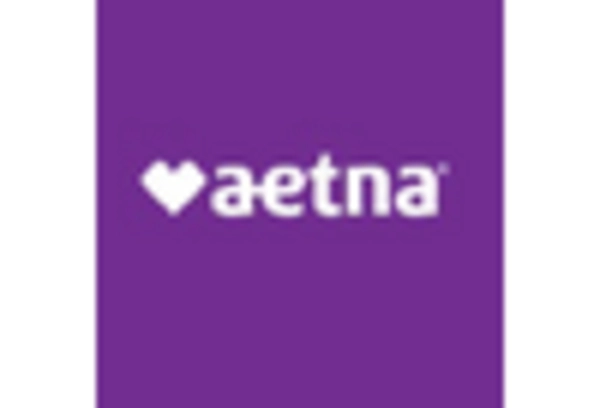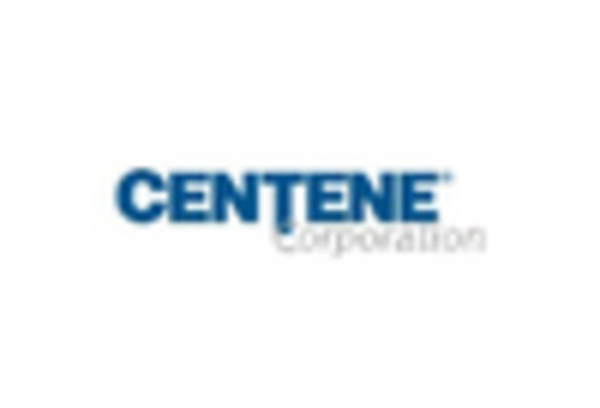The healthcare payer-services market is currently characterized by a dynamic competitive landscape, driven by factors such as technological advancements, regulatory changes, and an increasing emphasis on patient-centric care. Major players in this sector, including UnitedHealth Group (US), Anthem (US), and Cigna (US), are actively pursuing strategies that emphasize innovation and digital transformation. UnitedHealth Group (US) has positioned itself as a leader in integrating technology into healthcare delivery, focusing on data analytics to enhance patient outcomes. Anthem (US), on the other hand, is concentrating on expanding its regional footprint through strategic partnerships, thereby enhancing its service offerings. Cigna (US) is also notable for its commitment to improving healthcare accessibility, which collectively shapes a competitive environment that is increasingly focused on value-based care and patient engagement.
In terms of business tactics, companies are increasingly localizing their operations to better meet regional demands and optimize supply chains. The market appears moderately fragmented, with a mix of large players and smaller entities vying for market share. This competitive structure allows for a diverse range of services and innovations, as key players leverage their strengths to influence market dynamics. The collective influence of these companies is significant, as they drive trends that prioritize efficiency and patient satisfaction.
In October 2025, UnitedHealth Group (US) announced a partnership with a leading telehealth provider to enhance its digital health services. This strategic move is likely to bolster its capabilities in delivering remote care, aligning with the growing demand for telehealth solutions. By integrating telehealth into its service offerings, UnitedHealth Group (US) aims to improve patient access and streamline care delivery, which is crucial in today’s healthcare landscape.
In September 2025, Anthem (US) launched a new initiative aimed at reducing healthcare costs through innovative payment models. This initiative is significant as it reflects a broader industry trend towards value-based care, where reimbursement is tied to patient outcomes rather than service volume. By adopting such models, Anthem (US) is positioning itself to not only enhance patient care but also to improve its financial sustainability in a competitive market.
In August 2025, Cigna (US) expanded its health equity program, focusing on underserved communities. This initiative underscores Cigna's commitment to addressing social determinants of health, which is increasingly recognized as a critical factor in healthcare delivery. By prioritizing health equity, Cigna (US) is likely to enhance its brand reputation and customer loyalty, which are essential in a market where consumers are becoming more discerning.
As of November 2025, the competitive trends in the healthcare payer-services market are heavily influenced by digitalization, sustainability, and the integration of artificial intelligence (AI). Strategic alliances are becoming more prevalent, as companies recognize the need to collaborate to enhance service delivery and operational efficiency. Looking ahead, competitive differentiation is expected to evolve, with a shift from traditional price-based competition towards innovation, technology integration, and supply chain reliability. This transition suggests that companies that can effectively leverage technology and foster strategic partnerships will likely emerge as leaders in the market.

















Leave a Comment